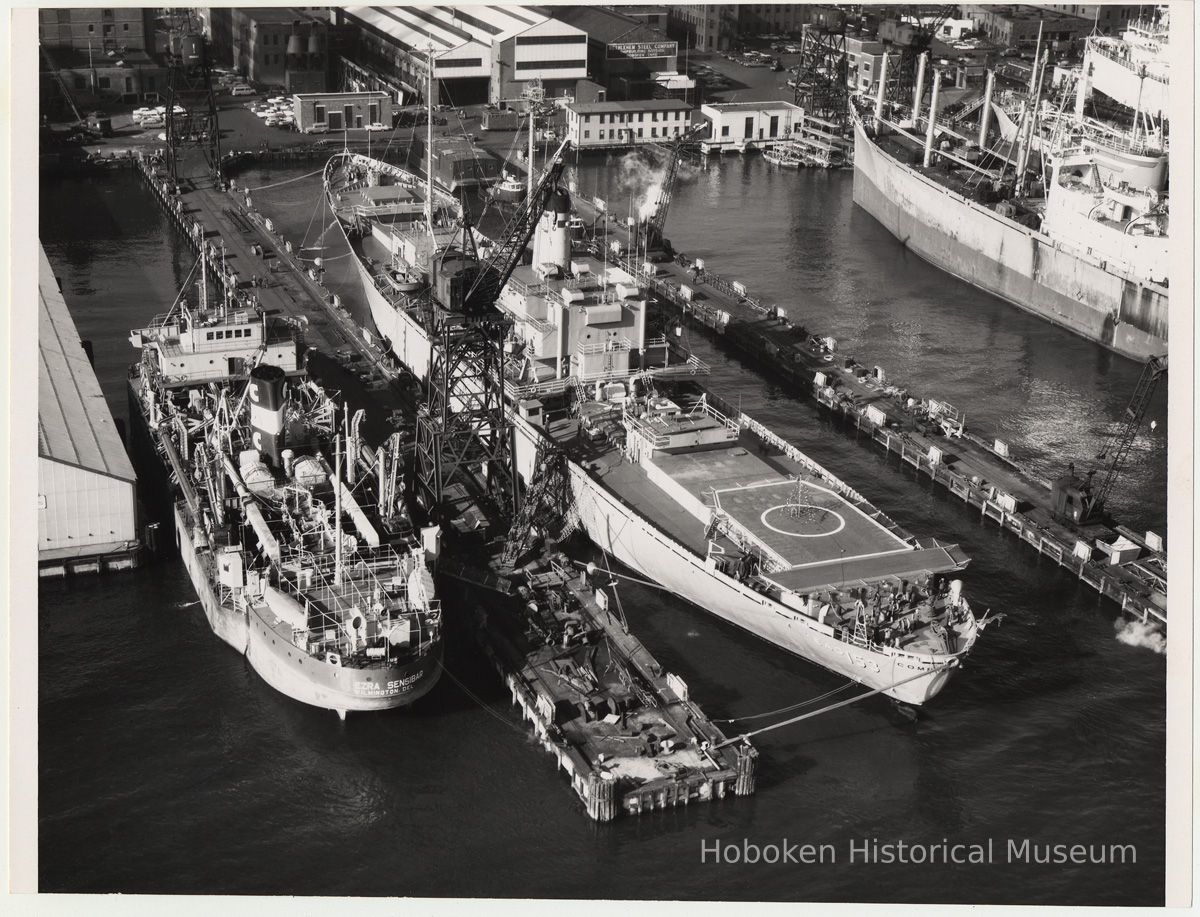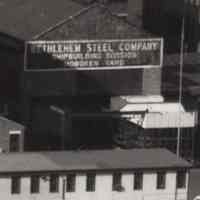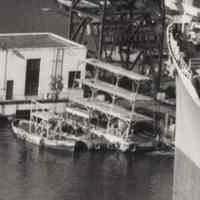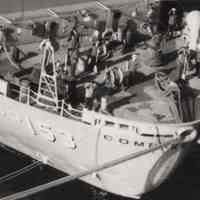Collections Item Detail
B+W aerial photo of S.S. Ezra Sensibar & U.S.S. Compass Island at Bethlehem Steel Hoboken Shipyard, n.d., ca. 1969.
2012.007.0062
2012.007
Lukacs, Claire
Gift
Museum Collections. Gift of a Friend of the Museum.
1969
Hoboken
8 in
10 in
Notes: USS Compass Island (AG-153) From Wikipedia, the free encyclopedia Career (USA) Name: USS Compass Island (AG-153) Namesake: An island in Penobscot Bay off the coast of Maine Builder: New York Shipbuilding Corporation Launched: 24 October 1953 as Garden Mariner Acquired: 29 March 1956 Commissioned: 3 December 1956 Decommissioned: 1 May 1980 Struck: 31 March 1986 Fate: Maritime Administration 9 April 1993 Status: National Defense Reserve Fleet General characteristics Class and type: Compass Island Displacement: 18,000 tons (full) Length: 563 ft (172 m) Beam: 76 ft (23 m) Draft: 26 ft (7.9 m) Speed: 20 knots Complement: 214 Compass Island (EAG-153) was launched 24 October 1953 as Garden Mariner by the New York Shipbuilding Corporation, Camden, New Jersey and sponsored by Mrs. H. A. Smith. Acquired by the Navy 29 March 1956 and commissioned 3 December 1956, Commander J. A. Dare in command. The first mission of Compass Island was to assist in the development and evaluation of a navigation system independent of shore-based and celestial aids, a necessary adjunct of the ballistic missile program. She operated along the eastern seaboard testing equipment and training personnel until 13 March 1958 when she sailed from New York for experiments in the Mediterranean, returning to New York 17 April to resume her east coast operations. A dramatic example of her work was provided when Nautilus (SSN-571), using the Shipboard Inertial Navigation System (SINS) first tested by Compass Island in 1957, made a submerged cruise beneath the Arctic ice pack touching exactly at the North Pole 3 August 1958. The INS hardware was the N6A-1 built by North American Aviation, a naval modification of the N6A designed for the Navaho cruise missile, and had also been installed on the Skate along with the Nautilus following successful sea trials on the Compass Island[1] (The USS Skate reached the North Pole the week after Nautilus, and in the following year became the first vessel to surface at the North Pole.) North Pole navigation succeeded after initial INS testing on the Compass Island.On 10 September 1958, Compass Island entered New York Naval Shipyard for overhaul and installation of additional navigational equipment to be tested. With this new equipment, she continued her east coast and Caribbean cruising through 1960. In 2003, Compass Island and three other decommissioned US Navy ships, the Caloosahatchee, Canopus and Canisteo, were towed to the port city of Hartlepool in the United Kingdom to be scrapped, but UK environmentalists protested their arrival at Able UK, the salvage company. Work to dismantle a controversial fleet of former US warships was slated to begin in the summer of 2008, five years after the company originally won the scrapping contract. Original or Copy: Original Status: OK Status By: West, D. Status Date: 2012-03-23






